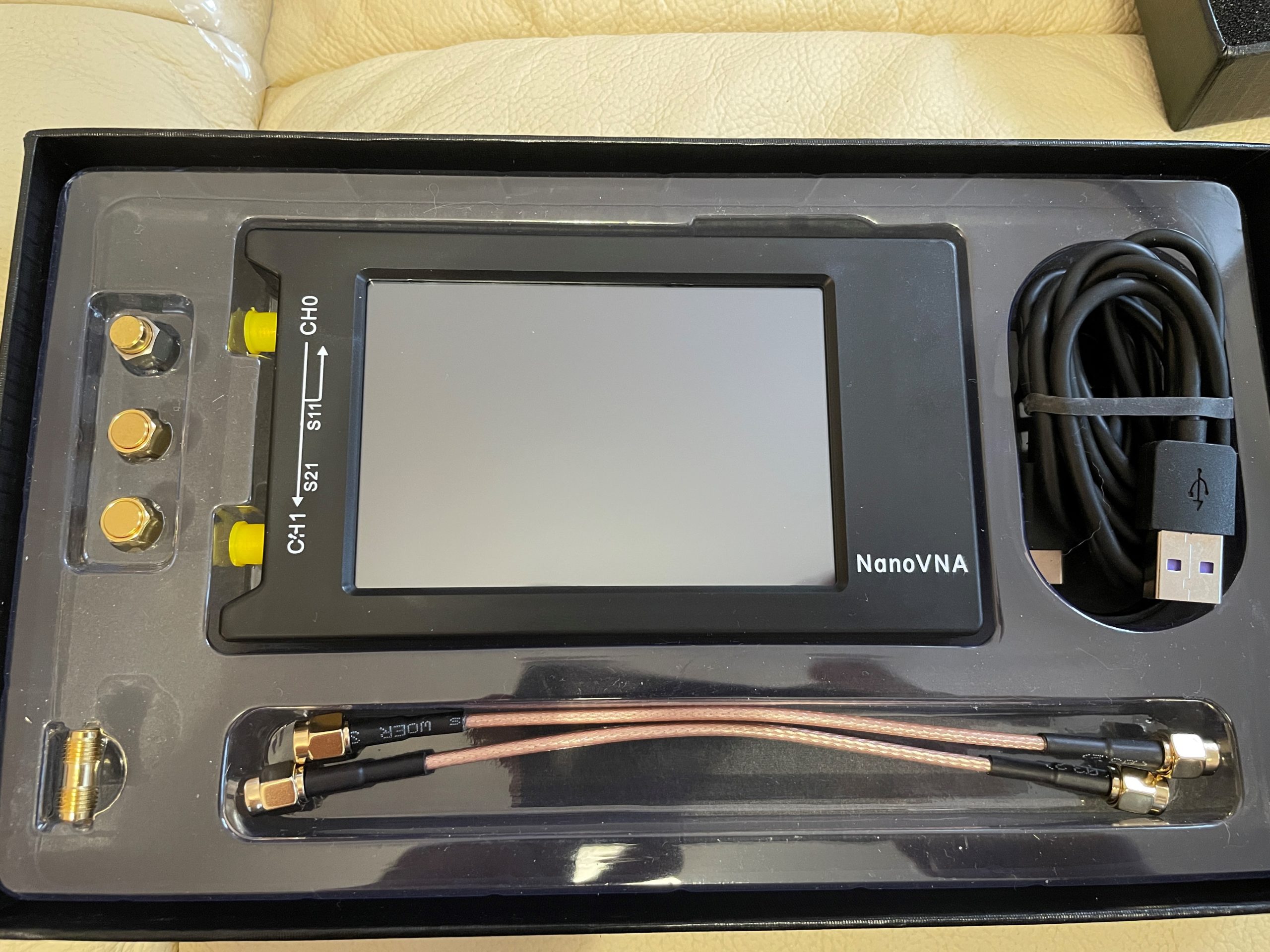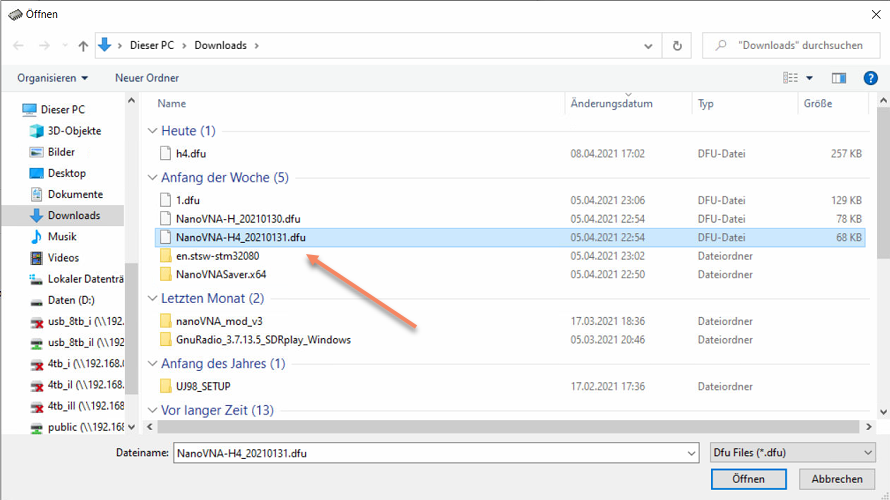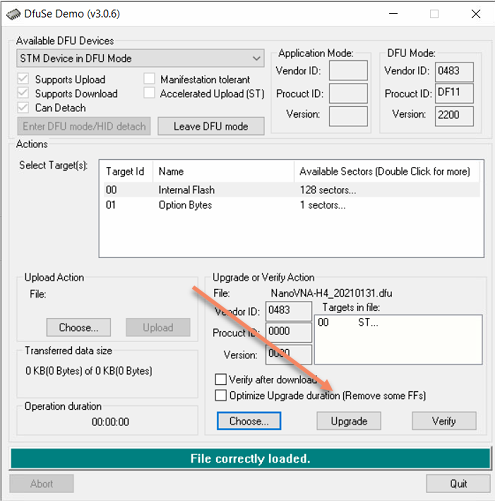NanoVNA H / H4 – Firmware Update
Today the NanoVNA H / H4 came to me and the first thing I did was to update the firmware. How this works, you can read here. Among other things, you can now cover up to 2 GHz.

DfuSE – The program to flash the firmware
The first thing to do is to download DfuSE. The software is free and can be downloaded against registration. You can find the software here: STSW-STM32080 – DfuSe USB device firmware upgrade
By clicking on “Get Software”, you can then register and will receive the download link by e-mail.

NanoVNA H / H4 Firmware
Now you have to download the firmware. You can find it on Github under the following Link DiSLord NanoVNA: DiSLord NanoVNA-H4 Firmware
Make sure to select the correct version, depending on whether you have the H or H4 variant. The wrong firmware makes the device unusable for the time being. You can still write the firmware directly on the chip, but you will need the appropriate hardware.
At the time of this post, version 1.0.64 was current. Here you need to download the file with the extension .dfu:

NanoVNA H / H4 in DFU mode and install driver
- First, the NanoVNA H4 must be set to DFU mode: To do this, press the joystick in the middle and switch on the device. The screen should now remain black.
- With the NanoVNA H, the DFU mode is started via the Config Menu.
- Now the NanoVNA H4 can be connected to the computer via USB. Probably the USB driver is missing in the Device Manager.
- Then the driver must be installed in the device manager from the DFU installation path via the device manager. You can find it here: C:\Program Files (x86)\STMicroelectronics\Software\DfuSe v3.0.6\Bin\Driver\Win10
- Now DfuSeDemo can be started from the start menu.
Firmware Flash with DfuSE
In the DfuSE, the lower “Choose Button” must then be clicked:

Now the just downloaded firmware file can be selected:

With a click on “Upgrade” the firmware is now updated:

Please make sure to select the correct firmware. If you flash the firmware without H4 on a NanoVNA H4, the device is defective for the time being. You can still write the firmware directly on the chip, but then you need the appropriate hardware.